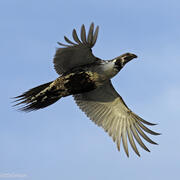An animated heat map of greater sage-grouse (Centrocercus urophasianus) annual peak male counts from 1990 to 2023
An animated heat map of greater sage-grouse (Centrocercus urophasianus) annual peak male counts from 1990 to 2023An animated heat map of greater sage-grouse (Centrocercus urophasianus) annual peak male counts from 1990 to 2023 using the standardized sage-grouse lek database. The color ramp uses light blue (fewest number of males counted on leks) to purple (greatest number of males counted on leks), reflecting local minimum and maximum counts of males.














